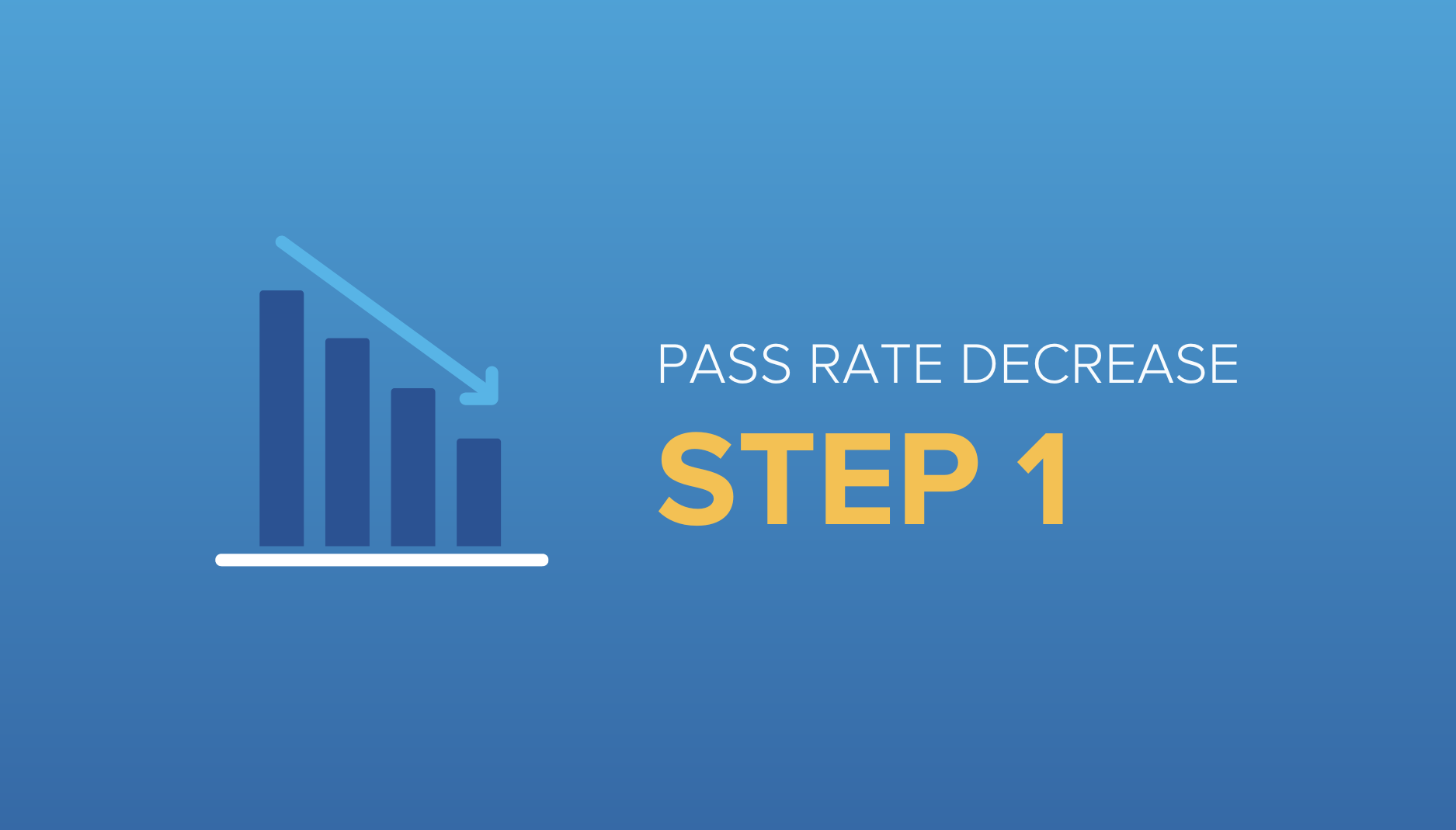As a medical student, preparing for Step 2 of the United States Medical Licensing Examination (USMLE) is a crucial milestone on your path to becoming a licensed physician. With the recent change in Step 1 scoring to pass/fail, Step 2 has gained even more significance in showcasing your clinical knowledge and skills. In this guide, we explore the importance of Step 2, provide tips for creating a study schedule, and offer valuable insights on how to optimize your score so you can boost your residency application.
The Significance of Step 2
When applying for residency, think about your application from the perspective of the program: each residency program receives hundreds to thousands of applications each year, for only a dozen or so spots. It’s simply unfeasible for the core faculty at each program to read through each application from the thousands of applicants, not to mention their personal statements and letters of recommendation. Therefore, residency applications are almost always filtered initially by national exam scores.
In previous years, this onus fell to USMLE Step 1—however, now that Step 1 is pass/fail, Step 2 has become the primary assessment tool for residency program directors to evaluate your clinical competence. For applicants like yourself, this means that you must meet the score cutoffs before your application even has a chance of being seen by a pair of human eyes. Scoring well on Step 2 not only demonstrates your aptitude for clinical practice, but it’s also a key predictor of how you’ll perform on national board exams. Because of the hefty weight Step 2 holds, it’s imperative that you prepare adequately for it.
Along those lines, one of the most important things you can do to get ready for Step 2 is to make your own study schedule. Let’s examine why it’s best to make your own, rather than try and use a premade one.
The Importance of Making Your Own Step 2 Study Schedule
Everyone studies differently. It may take you 2 hours to learn an introductory subject while it takes your classmate 2 days. For this reason alone, students can find it difficult to adjust to a premade schedule, especially one that does not take your strengths and weaknesses into account. Therefore, I recommend crafting your own Step 2 CK study plan. Doing so will allow you to optimize your time for Step 2 studying and get the best results.
Thousands of medical students use Blueprint’s Med School Study Planner to save hours of planning time, see exactly what to do each day, and ace their med school exams. Get unlimited FREE access today!
8 Tips for Creating an Effective Study Schedule
While it’s important to make your own schedule, you still need to make sure it’s one that will get you adequately prepared for the exam! Here are eight practices for creating a study schedule that will get ready for Step 2.
1. Assess Your Current Knowledge
Begin by evaluating your strengths and weaknesses in different clinical areas. Be honest with yourself. This will help you allocate more time to topics that require additional attention. Are you nearing mastery of USMLE cardiology? If so, then just spend a few days brushing up on it and save the rest of the week for a subject you’re having trouble with.
2. Set Realistic Goals
Establish achievable study goals and prioritize your tasks. Break down the content into manageable sections and assign specific timeframes for each topic. Detail a time frame and be realistic. You’ll need to take breaks, and be sure to schedule them to prevent burn out. You will also have distractions, so be sure to set aside additional time, especially if you are still on rotations and your school does not offer dedicated time off to study.
3. Set Up Your Study Space
Whether you plan to spend the next few weeks at home or at the library, make sure you have a consistently available study space where you can focus. If you plan to be at home, use a room with natural light, a comfortable desk and office chair, or stand if you prefer standing desks.
Limit distractions by keeping your phone outside. If you plan to study at a library or coffee shop, have your backpack loadout ready to go. Be sure to bring your charger, a snack, a jacket, water, headphones, and whatever study materials you need for the day.
4. Select Your Study Resources
You don’t need to go overboard here, just utilize the appropriate study resources, including review books, question banks, online platforms, and supplementary materials. Ensure they align with your learning style and preferences. Qbanks are a must, and make sure you have practice questions and tests! If you’re unsure of where to start, check out this list of Step 2 study resources supported by Blueprint’s Med School Study Planner.
 Still looking for a Step 2 Qbank? Meet the new combined Step 2 & Shelf Exams Qbank with 5,000 practice questions that most closely match what you’ll see on your USMLE Step 2 and all of your shelf exams. Get started with 7-day FREE access!
Still looking for a Step 2 Qbank? Meet the new combined Step 2 & Shelf Exams Qbank with 5,000 practice questions that most closely match what you’ll see on your USMLE Step 2 and all of your shelf exams. Get started with 7-day FREE access!
5. Create a Weekly Study Plan Down to the Hour
Divide your study time into manageable blocks, and assign dedicated time to each topic. Incorporate regular breaks to maintain focus and prevent burnout. Be sure to maintain flexibility and allow time for review. Give yourself room to account for unexpected events like getting sick or needing to schedule additional review time for certain topics. Adapt your plan as needed, but strive to stay consistent and disciplined.
6. Review Efficiently
To really internalize a topic, you need to learn and review it! This can involve going over the notes you jotted down, watching videos for these topics, answering MCQs, and reviewing the MCQs you struggled with. Topics you are familiar with can be reviewed in a few days, while heavier topics should span the better part of a week. Start with topics you need the most time for, and remember that reviewing flashcards regularly will solidify your knowledge in preparation for test day.
7. Schedule Practice Tests
Utilize practice exams at regular intervals, perhaps weekly, to track your progress and tailor your studying. Schedule these in advance, and designate a day to take and review them. I usually have my students do this on Sundays. You can check out the Comprehensive Clinical Science Self-Assessment (CCSSA) and Comprehensive Clinical Science Examination (CCSE) for Step 2 CK practice exams that mimic what you’ll see on the actual exam.
8. Take Days Off
Let me repeat, plan days off! Then make some plans for your day off. Usually, one day off a week is adequate. This will help to prevent burnout and mentally refresh you for the week ahead. If you are really pressed for time, you can make this a half day. On your day off, go do something you enjoy, see your friends, watch a movie, or play a sport. Whatever it is, try and get your mind off the exam and all the pressures associated with it.
Furthermore, you should plan something special to celebrate once you complete the exam. Take an extravagant trip, eat a lavish meal, or do whatever you feel like because you will have just finished USMLE Step 2!
5 Tips That Will Help Maximize Your Step 2 Score
Now that we’ve outlined how to create an effective study schedule, let’s discuss some strategic things you can do, above and beyond it, which will help you crush it on exam day. To optimize your Step 2 exam performance, consider the following:
1. Schedule Your Test Early
This will light the fire and push you to start studying. Also, registering early will ensure you secure a spot in your city. My classmate had to fly out of state to take his Step exam, don’t let that be you!
2. Take Step 2 After You’ve Completed Your Core Clerkships
In comparison with Step 1, Step 2 is more clinically focused. This is why I recommend taking Step 2 after you have finished the lion’s share of your core clerkships. The NBMEs and shelf exams you will have completed for the core rotations will help a great deal in your Step 2 preparation.
While a typical Step 1 question might ask basic pathology, microbiology, or simple pharmacology, Step 2 multiple-choice questions incorporate clinical findings while maintaining those basics. Thus, simply knowing the first-line antibiotic might not be enough, you will excel if you know the first, second, and third-line antibiotics because there will be hints in Step 2 question stems to steer you toward one particular answer.
3. Start Studying During Your Clinical Rotations
In order to receive a score in the top quartile, you need to start focusing during your clinical rotations. It is a concerted effort throughout your MS2 and MS3 years. Ace your NBME shelf exams and continue to consolidate knowledge and make topics stick. Keep flashcards around and keep adding new ones as you cruise through your rotations. Working hard in your clinical years has multiple benefits—you’ll do well on your rotations, receive better letters of recommendation, and earn higher grades for your MSPE. Your patients and medical team will benefit from your acquired knowledge, not to mention you will likely have a faster workflow. Furthermore, you will gain a deeper understanding of medicine that will ultimately help you review for USMLE Step 2 and Step 3.
If I meet my students early enough, I always recommend they perform a first pass through a USMLE Step 2 question bank as they progress through their rotations. Doing so during your clerkship years will allow you to integrate the knowledge from each rotation with the topics on the NBME tests. Furthermore, it will be easier to go through 2,000 questions the second time around, deepen your knowledge, and help you memorize the topics.
4. Take Step 2 Within 6 Months of Completing Your Core Rotations
Given that clinical experiences are so relevant to Step 2, you should aim to take Step 2 within 6 months of finishing your core clinical rotations, if possible. It is obviously easier to review when the topics covered for Step 2 are similar to those tested on your core rotation’s shelf exams. However, be wary about jumping into Step 2 studying immediately after your core rotations, as that can lead to exhaustion and ineffective studying.
5. Consider Getting a Tutor
A common question is, “Should I get a tutor to help me prep for Step 2?” Most students do fine on Step 2 and don’t need a tutor—however, every student could benefit from utilizing tutoring services. A tutor can assist in creating a personalized schedule, pinpointing your weak spots, and helping you best utilize your time studying.
It may be a good idea to hire a tutor if your prior national exams or practice NBME exams suggest you may not obtain the score you desire. In addition, tutors can help students who find exams stressful or who have fallen behind for any reason.
Further Reading
Given the increased emphasis residency programs place on Step 2, you’ll want to get the best score possible. Be sure to create your own study schedule, make it as effective as possible, and think strategically about ways to maximize your score. Follow the tips and strategies I shared with you in this post, and you’ll be more likely to crush it on exam day. If you think you may need a Blueprint tutor, please reach out to us!
For more (free!) tips from Blueprint tutors, check out these other posts:






